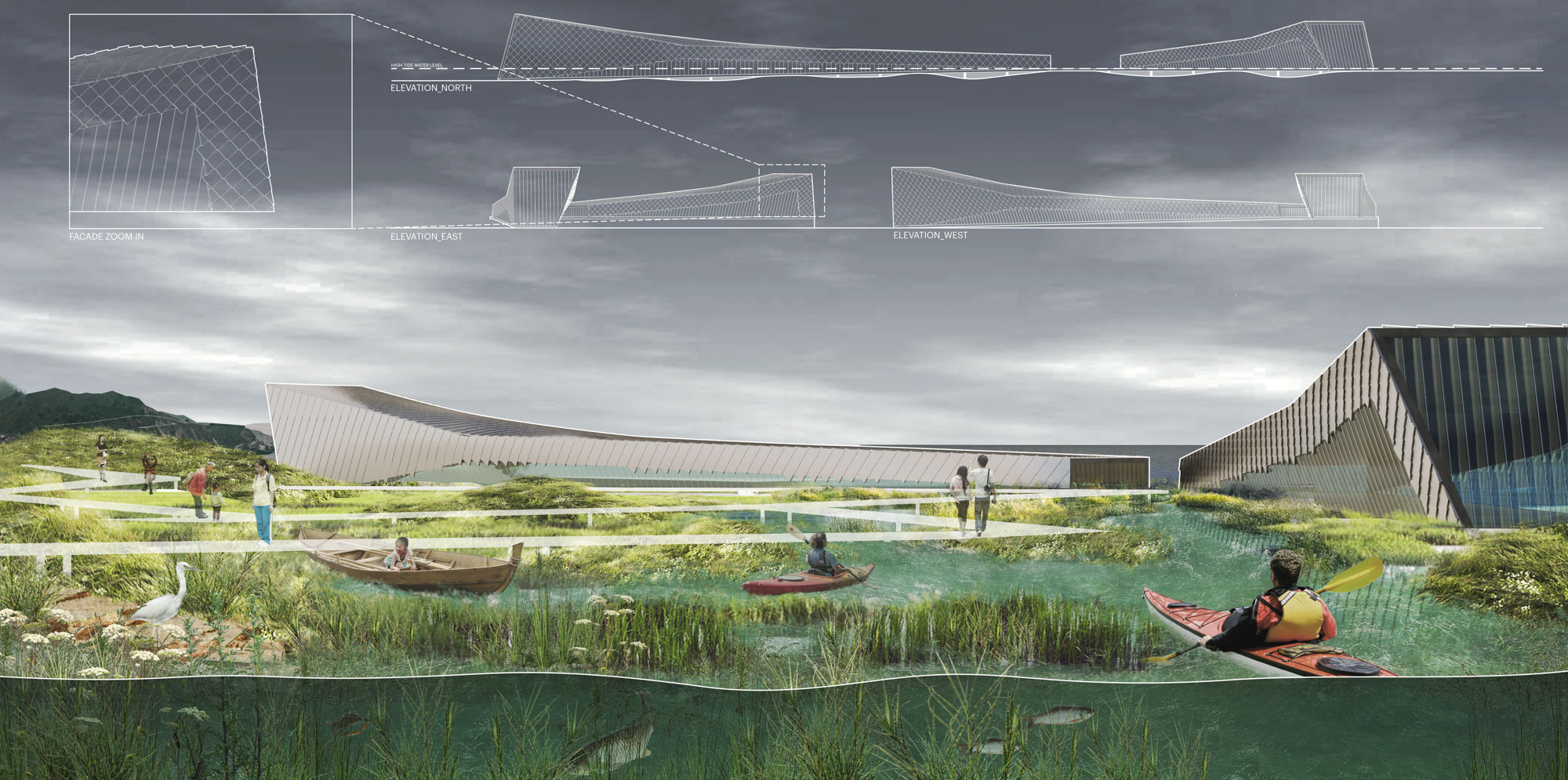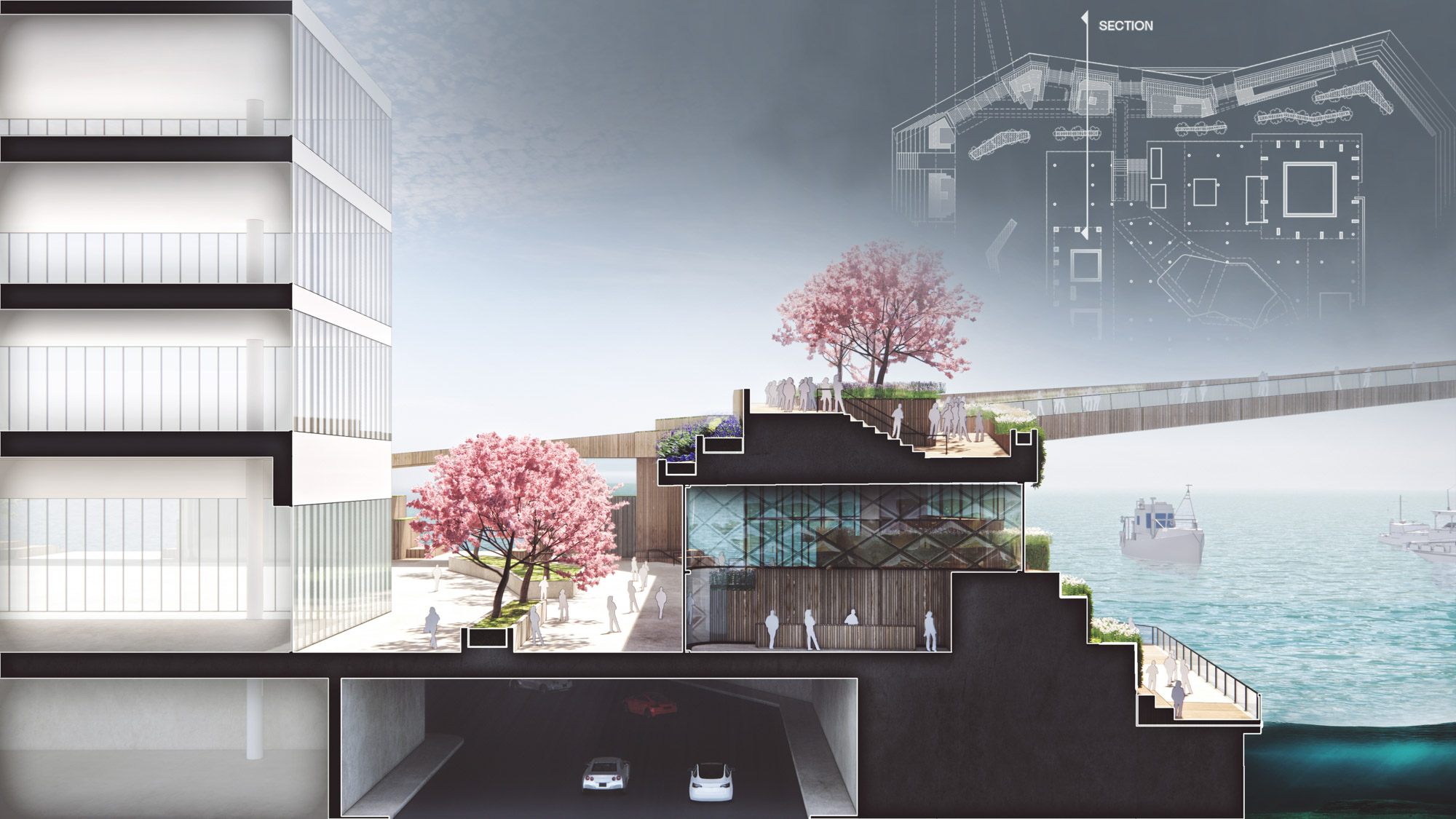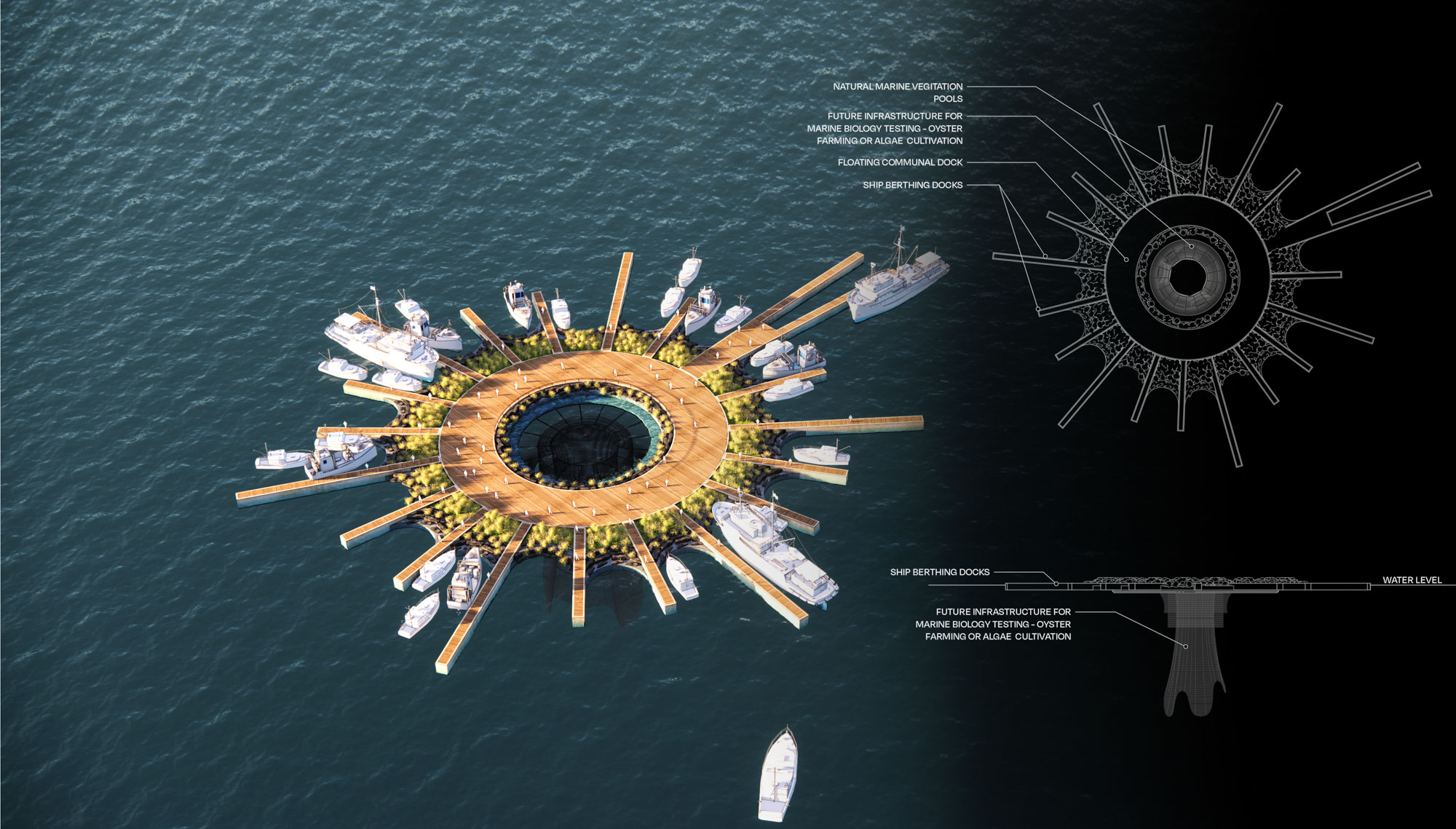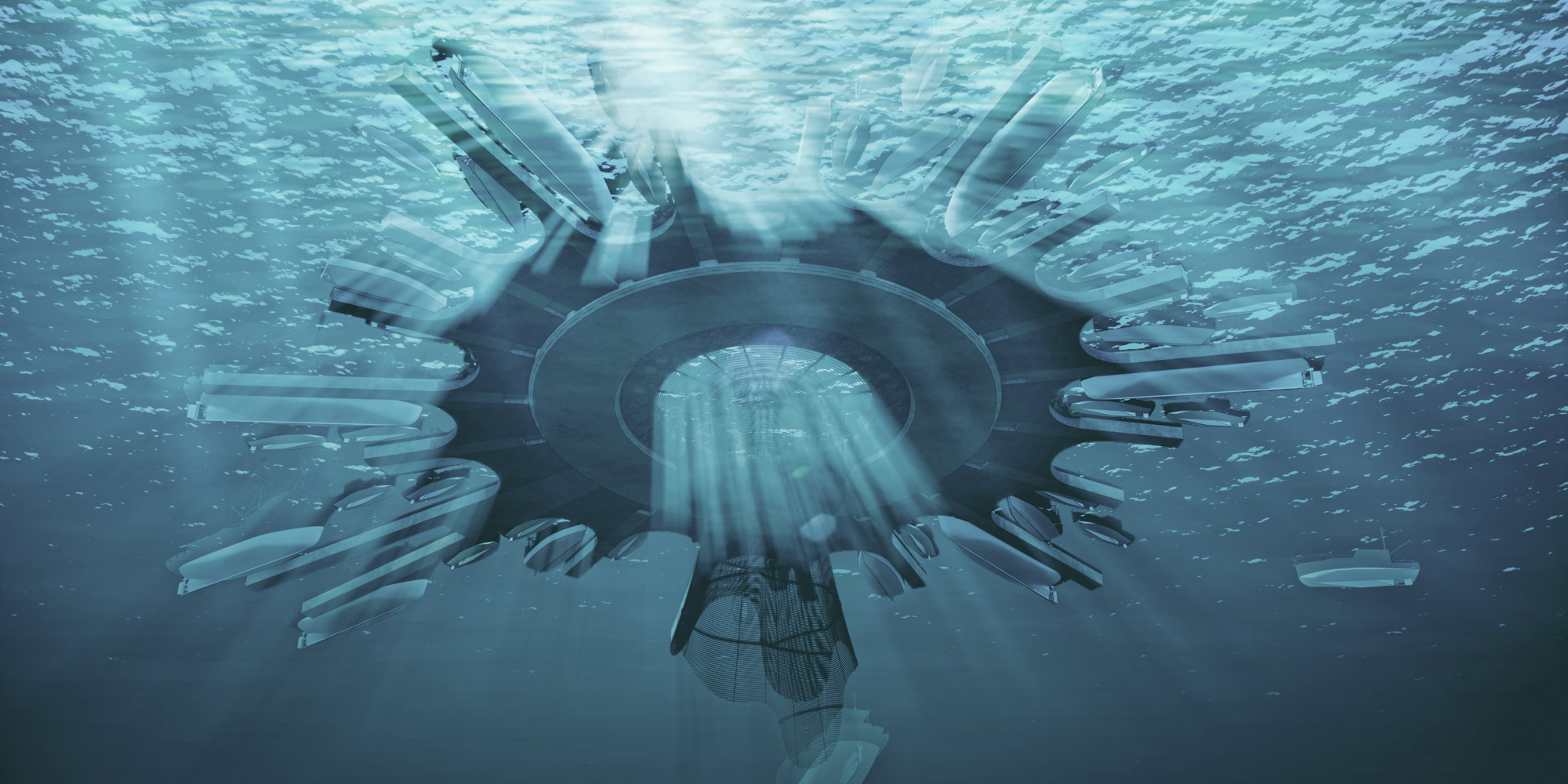
Shenzhen, China has transformed drastically from a simple fishing village to a booming economic power in a very short amount of time. The Shekou fishing harbor at the south shore of the city is a microcosm of this change. The adjacent ‘Deep Bay’ is a hotbed for oyster farming and is bustling with fishing boats – but the harbor’s adjacency to Hong Kong and Macao makes it a vibrant international cultural port. Our aim with this project was to balance in harmony an evolution of a historic industry, rich ecological repository, and cultural growth through a vision that intertwines the natural environment with new experiences through urban gestures that are heavily influenced by the site’s past. We call this strategy “Urban Biophilia”.

The site is composed of two sides of a harbor connected by a new bridge. On the east shore is a new dedicated fishing port and recreational boat docks. On the south shore, we compliment 3 high-rise towers that are currently under construction with a perimeter experience that creates a 2-sided layered waterfront through the capturing of urban tide pools, a new retail promenade, and a ramped urban cliff edge above. A new pedestrian bridge connects this with the west shore, which is home to a new Fishery museum. We integrated the museum into an expansive tidal marsh that covers the entire west shore of the harbor. The museum submerges into the marsh, allowing viewers to get a glimpse below the water’s surface during the rising tides.

Museum and pedestrian birdge

Tidal Changes

Urban vs. Natural
The left diagram highlights the importance of the 2 meter tidal shift over the course of 26 hours in the harbor. Our tidal marsh landscape is designed to flood with the rising tides, creating new direct channels for sea life between the harbor and the bay. As the tidal marsh floods, the water partially submerges the museum creating a viewer experience from inside that highlights the sea life both above and below the water’s surface.
The right diagram highlights our balance of city and natural environment. The west side tidal marshes are dominated by natural landscape engulfing the museum architecture, and on the east side this relationship is inverted as an urban condition with curated landscapes strung through it.


Pedestrians have 4 distinct pathways through which to experience the site. The first is a continuous water-level boardwalk experience (pink). One level removed from this is a continuous cultural connection through the site passing through the fish market and promenade (red). Yet another level above that, a pedestrian can experience a continuous retail corridor that connects new dining with the under-construction retail development (orange). Lastly, a continuous green network on site connects the Shekou city park with the waterfront (green).

Our design balances local fishing industry with the expanding cultural opportunities in the area. Here we take a cross section through time with a series of distinct pedestrian experiences. Each stepped level of the waterfront is a stop along the gradient of the fishing industry to the modern culture, starting at water level with the wharf, to the boardwalk, to the fish market, to finally fine dining.

Shekou FIshing Port dock view

While a typical boardwalk has a singular user experience and one-directional focus, our boardwalk at Shekou Fishing Harbor is a multi-layered and multi-directional promenade. The three distinct pedestrian paths intertwine at this location into a rich cultural experience with connectivity to the natural harbor edge, a two-sided retail corridor with visibility to and from the harbor, and an elevated green walk that provides views out across the harbor and overlooking the promenade while connecting users up to the new pedestrian bridge.

Shekou Fishing Port boardwalk view

Shenzhen’s proximity to Hong Kong positions it as a national checkpoint on land and water. This harbor sees a large number of national and international water vessels and water organization for the different boats is essential. Today, ship berthing in the harbor is chaotic, with hundreds of boats ganged together in giant packs in the water. We developed these floating docks as a way to organize boat berthing zones.
However, these are more than just boat docks. They function as marine biological stations with a variety of future uses. Inspired by the area’s enormous oyster farming scene, these stations can be used for future oyster harvesting and growth, rejuvenating the local marine ecology and cleaning the harbor for future recreational use and experiences.
